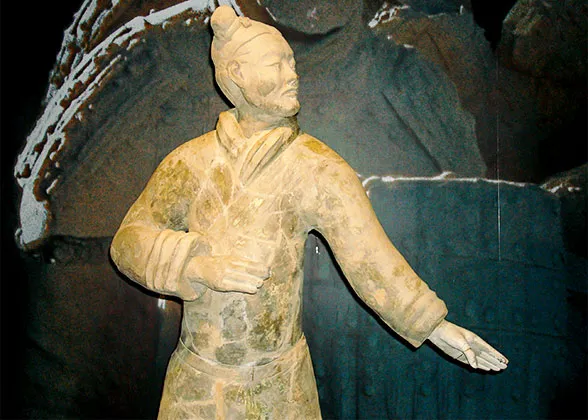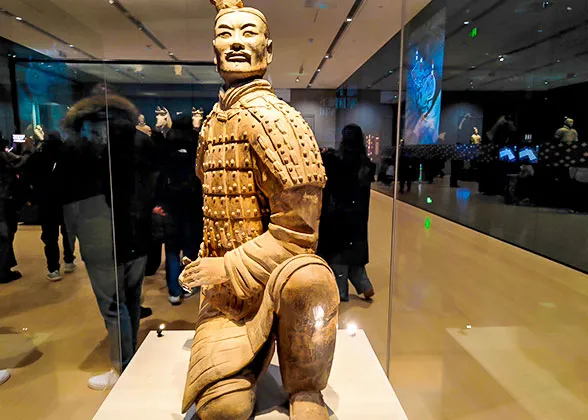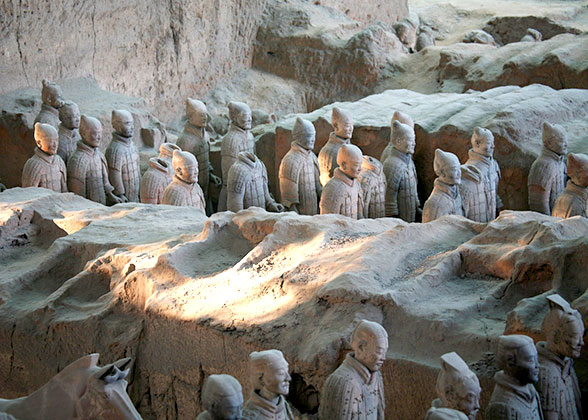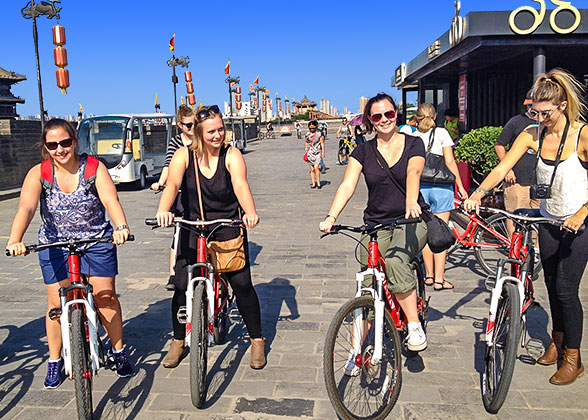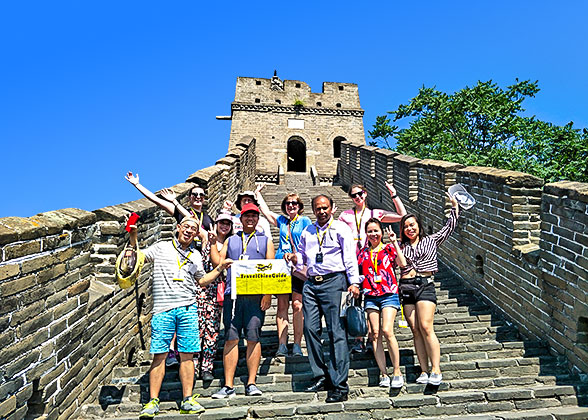Who Built the Terracotta Army?
After ascending the throne, Emperor Qin Shihuang (259 BC - 210 BC), the first emperor of China, ordered the construction of his mausoleum, which includes a massive underground legion of terracotta warriors and some burial pits, to guard him in the afterlife. The project was designed by the prime minister of that time, with senior officials such as General Zhang Han serving as supervisors. According to the inscriptions on the terracotta warriors, workers who built them can be mainly divided into three types.
Three Types of Workers Building the Terracotta Warriors
1. Artisans from Central Government Workshops
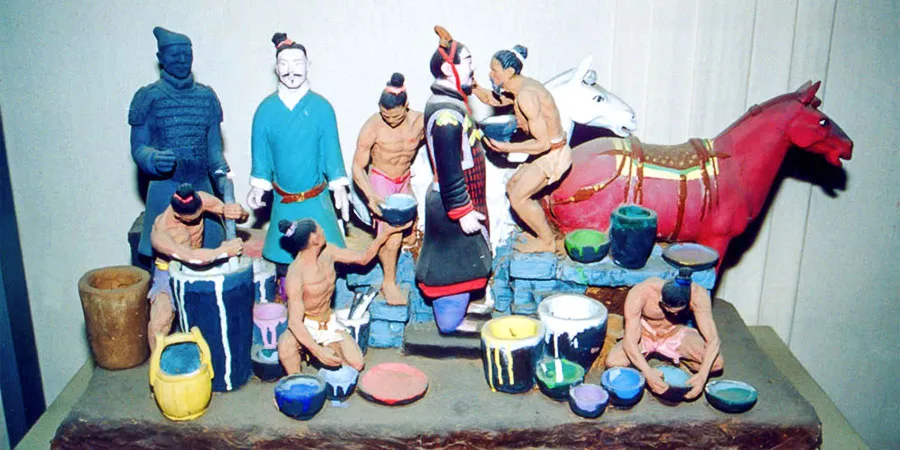 |
| Statues of Work Scene |
2. Potters from Folk Workshops
3. Some Unknown Craftsmen
Differences in the Terracotta Warriors Made by Different Workers
Terracotta warrior figures made by craftsmen from the central government and folk workshops differed in body shape, facial structure, and details. Those made by imperial craftsmen were generally tall, strong, and dignified, with refined sculpting skills. This was mainly because these artisans often saw imperial guards who were selected for their strong physique, and could observe them closely.
Folk workshops also produced many fine terracotta warrior figures, though some were less skillfully made. Since these potters were more familiar with ordinary people from various social backgrounds, the figures they created often had more lively expressions and natural poses.
|
|
Why Are There Workers' Names on the Terracotta Warriors?
The names carved on the terracotta warrior figures reflect an ancient Chinese quality control practice: makers were required to mark their work with their names, enabling supervisors to hold individuals accountable for their craftsmanship. This system was used by the Qin government to improve both the management of the workers and the quality of the terracotta warriors.
How Many Workers Built the Terracotta Army?
Historical records indicate that more than 700,000 people were involved in building the mausoleum of Qin Shihuang. It is still unknown exactly how many workers were directly involved in making the terracotta warrior figures, but given the large scale of the project, it is likely that a significant number of workers participated.
Ending of the Workers Building the Terracotta Army
Some people think that all of the workers were executed after the project was completed. However, this seems unlikely, as the total population of the Qin dynasty was not large, and the construction of the mausoleum required extensive heavy labor, typically performed by young adults. Killing all of them would have eliminated the core workforce and likely caused major social instability.
More likely, in order to protect the secrets of the mausoleum, the last group of workers, those with knowledge of the core construction details, were indeed executed. It is said that after the emperor's burial and the placement of burial objects, these workers were sealed alive inside the underground tunnels behind the final door. The discovery of several burial sites containing the remains of these workers near the mausoleum confirms this fact.![]() Further Reading:
Further Reading:![]() Terracotta Accessory Pits
Terracotta Accessory Pits![]() Ancient Greek Art Inspired China’s Terracotta Army? Impossible!
Ancient Greek Art Inspired China’s Terracotta Army? Impossible!![]() What is the Terracotta Army? 10 Things You should Know
What is the Terracotta Army? 10 Things You should Know![]() Where are the Terracotta Warriors Located?
Where are the Terracotta Warriors Located?![]() Why was the Terracotta Army built?
Why was the Terracotta Army built?![]() When was the Terracotta Army Built?
When was the Terracotta Army Built?![]() Why are the Terracotta Warriors Important?
Why are the Terracotta Warriors Important?![]() Who discovered the Terracotta Warriors?
Who discovered the Terracotta Warriors?![]() How the Terracotta Warriors were Made
How the Terracotta Warriors were Made![]() How to Visit Terracotta Army - A Perfect One-Day Tour Plan
How to Visit Terracotta Army - A Perfect One-Day Tour Plan
